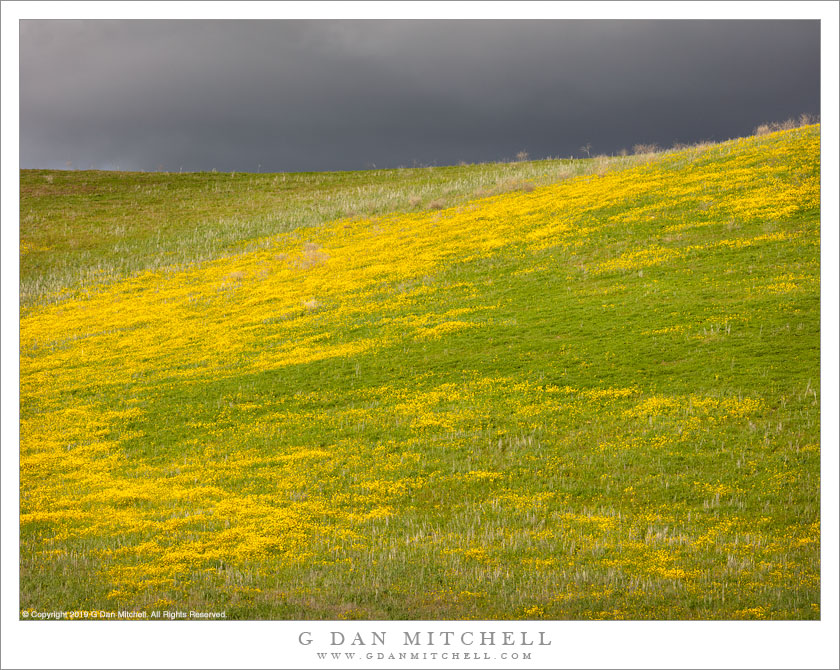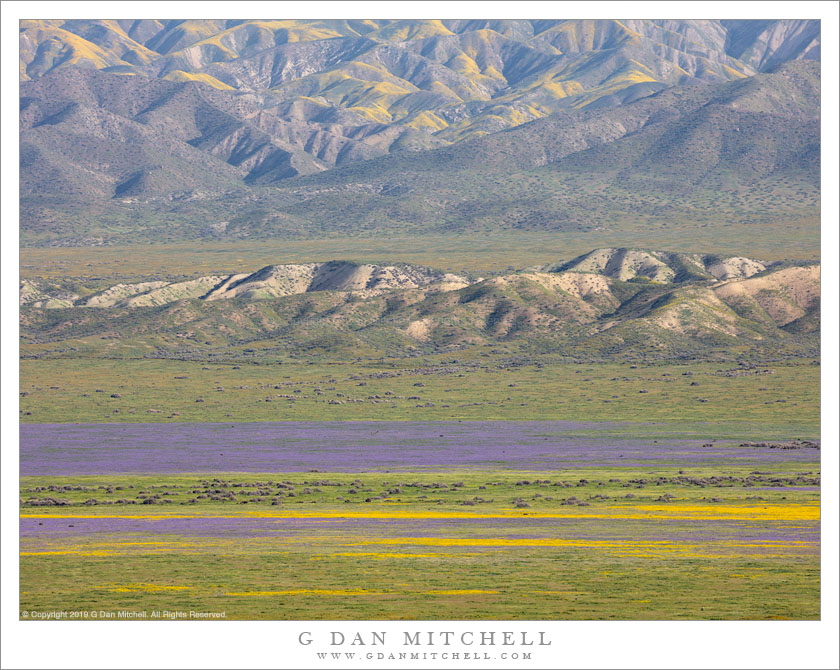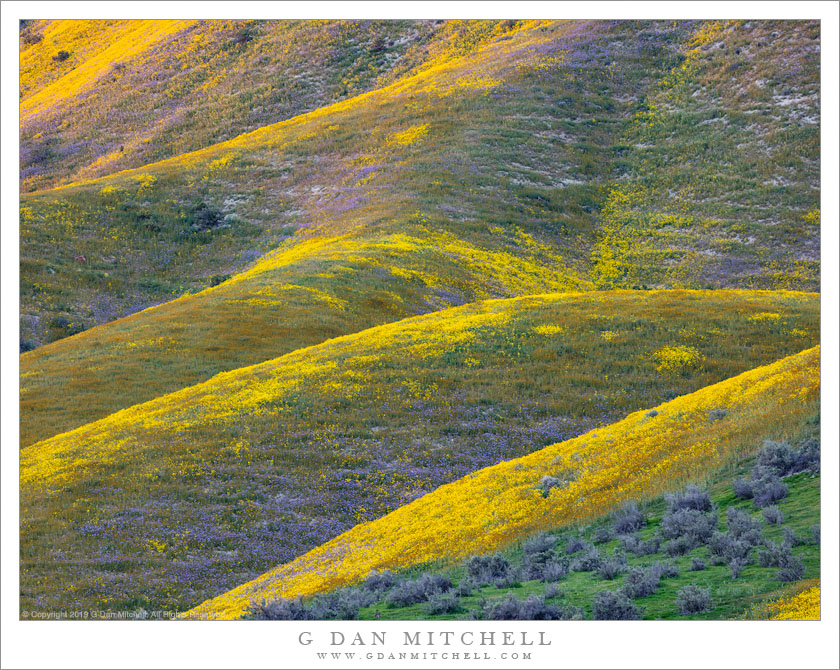
Spring Growth, Stormy Sky. © Copyright 2019 G Dan Mitchell – all rights reserved.
New spring grass and flowers on a hillside beneath a stormy sky.
This scene somewhat took me by surprise. When I went to the Carrizo I was expecting to experience sunny, dry conditions, and even a bit of warmth. But as I approached I drove through occasional light showers, and soon after I arrived at my campground it began to rain lightly. (This forced a decision – sleep in the back of my 4Runner or set up my tent. The prospect of having to repack a wet tent the next morning forced the decision.) I set up my minimal campsite — which mainly consisted of putting out a few objects to make it clear that the site was occupied — and then I headed out to make late afternoon and evening photographs.
As I headed down the gravel road it was clear that the afternoon weather was going to be “interesting.” At times it was sunny, but then moments later a shower would arrive and drop some rain. As I drove past this flower-covered hill, the sky behind it was covered in very dark clouds, so I stopped to make a photograph emphasizing the contrast. As I set up, beams of sunlight passed over the foreground scene, lighting it up against the darker and more dramatic sky.
G Dan Mitchell is a California photographer and visual opportunist. His book, “California’s Fall Color: A Photographer’s Guide to Autumn in the Sierra” is available from Heyday Books and Amazon.
Blog | About | Flickr | Facebook | Email
Links to Articles, Sales and Licensing, my Sierra Nevada Fall Color book, Contact Information.
All media © Copyright G Dan Mitchell and others as indicated. Any use requires advance permission from G Dan Mitchell.



